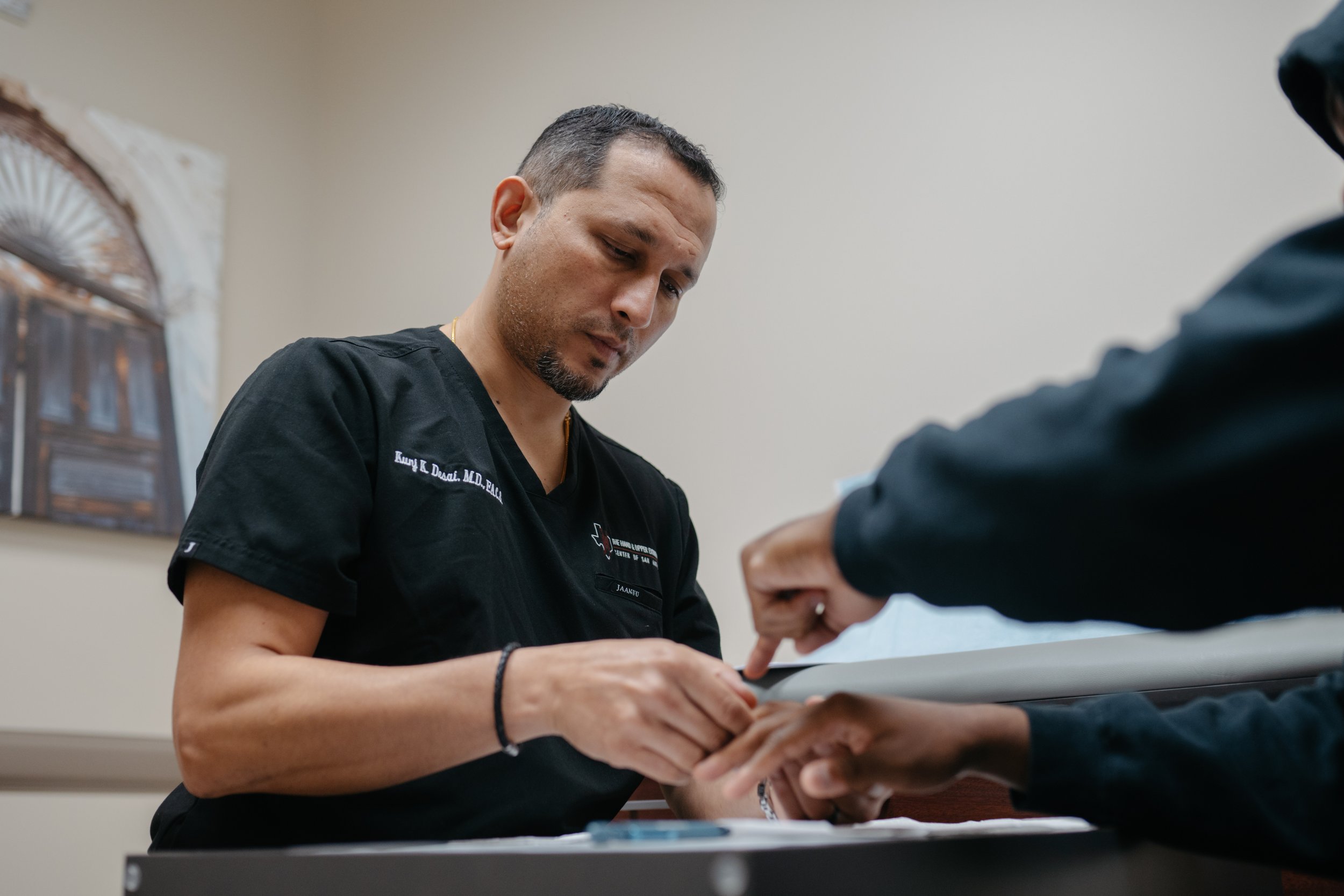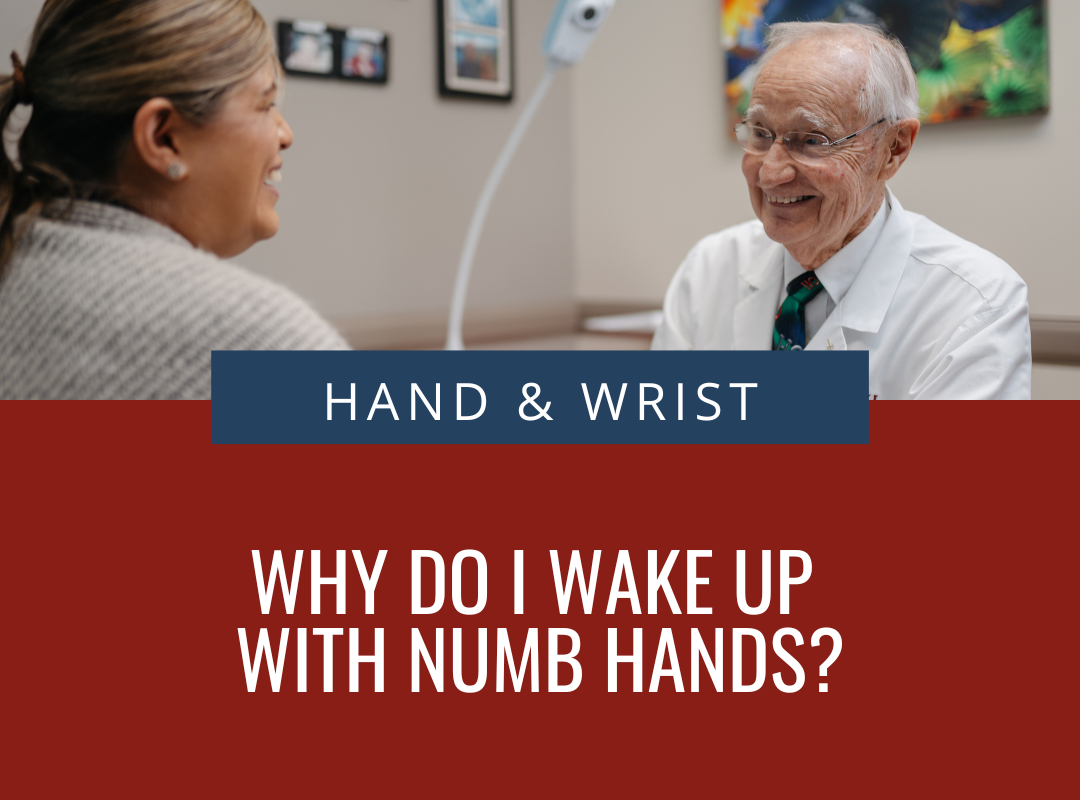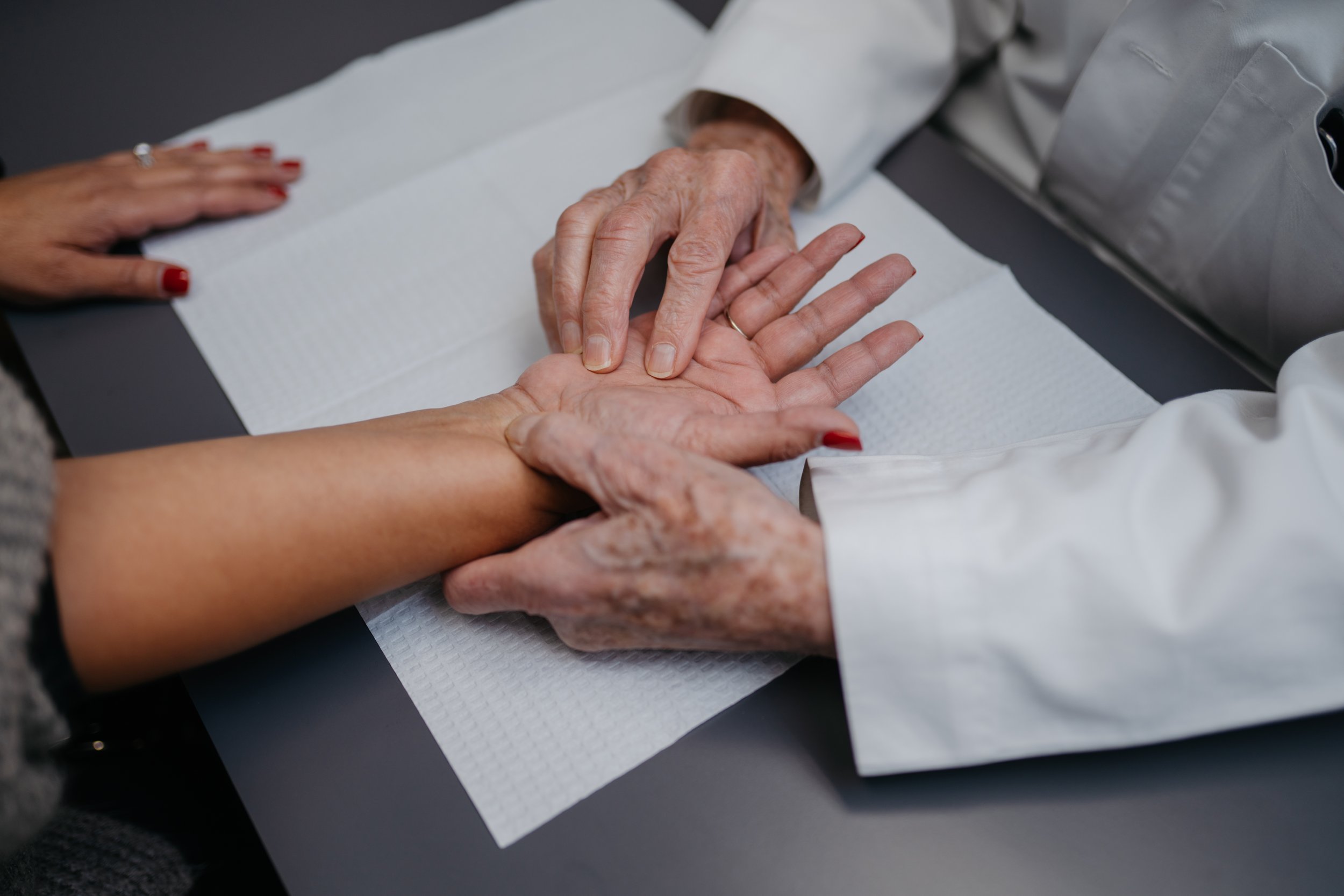
Ganglion Cyst On Wrist Treatment | Expert Hand and Wrist Specialists in San Antonio
Understanding Wrist Ganglion Cysts: Causes and Symptoms
A ganglion cyst is a bump that forms under the skin, most often near a joint or tendon in your wrist or hand. These cysts are filled with a jelly-like fluid. They can grow or shrink depending on how much you use your wrist. Cysts can develop when fluid leaks out of a joint or tendon lining. This often happens in areas where the body moves a lot, like the wrist or finger joints. The fluid collects in a small sac, which causes the lump you see or feel. Ganglion cysts often form near the joint capsule or tendon sheath, which help protect your joints and tendons. Sometimes, the cyst presses on nearby soft tissues or nerves. This can cause pain, tingling, or even muscle weakness in your hand or fingers.
Not all ganglion cysts are easy to see or feel. Some are hidden deep inside the wrist joint. These are called occult ganglions. Even though they may not cause a visible lump, they can still lead to pain, discomfort, or weakness—especially when moving the wrist. In these cases, your doctor may use imaging like an MRI or ultrasound to find the cyst.
Common Symptoms of a Wrist Ganglion Cyst
Symptoms of a wrist ganglion cyst can include:
Visible lump: The most prominent symptom is a visible lump/bump on the back of your wrist or hand. Depending on the size of the lump, it may be firm or rubbery to the touch.
Discomfort or Pain: Some people may experience pain from ganglion cysts if a nerve is pressed by the cyst. Depending on the activity, such as gripping or bending the wrist, the pain can be sharp or dull.
Numbness or Tingling : Cysts pressing on nerves can also cause tingling or numbness in fingers or hands.
Cyst Size Changes: Over time, cyst size may fluctuate, sometimes increasing with activity and sometimes decreasing with rest.
Weakness: The hand or wrist may become weak in cases of ganglion cysts, especially if the cyst is large.
Limited Range of Motion: Cysts may restrict wrist joint movement, causing stiffness or limited movement.
Worsening Symptoms: Repeated use of the wrist or certain activities that put pressure on the cyst may worsen symptoms.
What Causes Ganglion Cysts?
-
Joint or Tendon Irritation
Joints and tendons can become irritated or overworked if they are used frequently. As a result, the body may produce extra fluid to protect the area. It is possible for that fluid to build up and form a cyst filled with fluid. Often, these show up on the back of the wrist, but they can also appear on the palm side.
-
Injury to the Wrist or hand
In some cases, ganglion cysts form from injuries such as sprains, strains, or hard bumps. Injuries can cause fluid to leak from joints or tendons. Cysts can form when that fluid collects under the skin. Even if the injury happened a while ago, the cyst can appear later.
-
Arthritis
Arthritis patients are more likely to develop ganglion cysts, especially in the fingers and wrists. As joints wear down over time, arthritis develops. An extra amount of fluid may collect in the body and form a cyst as a result.
How is a Ganglion Cyst Diagnosed?
Most ganglion cysts are easy to spot during a physical exam. Your doctor may shine a light through the lump to see if it’s filled with fluid. In some cases, they may use an imaging test like magnetic resonance imaging (MRI) to confirm the diagnosis—especially if the cyst is small, deep, or causing unusual symptoms.
Effective Treatments for Cysts on the Wrist
There are a few ways to treat a ganglion cyst. If it doesn’t hurt or get in the way, your doctor may just watch it over time. If it causes problems, they may use a needle to drain it or suggest surgery to remove it. It is important to take into account the severity of your symptoms and the recommendation of your doctor when choosing an appropriate treatment plan. Depending on the severity and symptoms, we may recommend observation, aspiration, or surgery. Aspiration involves draining the cyst, though recurrence is possible. For cysts that return or cause significant symptoms, surgical removal may be the best option for relieving pain and restoring function.The following are some common treatment approaches:
Non- surgical treatments
Monitoring: It may be enough to monitor a cyst, especially if it is painless and doesn't cause any problems. Over time, ganglion cysts can shrink or disappear.
Immobilization: Splints and braces can be worn to limit joint movement and alleviate pain and swelling. Cysts can also shrink as a result of this treatment.
Aspiration: A doctor uses a needle to drain the fluid from the cyst.
Corticosteroid injection: Corticosteroids can reduce inflammation and alleviate pain in cysts. In order to reduce the chances of recurrence, this treatment is often combined with aspiration.
Anti-Inflammatory Medicines: This can help reduce irritation in the joint and make movement more comfortable. In some cases, wearing a wrist brace or splint can also help relieve pressure.
surgical treatments
Ganglionectomy: Surgery may be an option if non-surgical treatments do not provide relief or the cyst continues to recur. This procedure involves removing the entire cyst, along with its stalk, from the joint or tendon sheath. There are two approaches to this surgery: open surgery (traditional approach with a larger incision) and arthroscopy (minimally invasive approach with a smaller incision).
In order to determine the best course of treatment for wrist ganglion cysts, individuals should speak with their healthcare provider about their symptoms and preferences.
IF YOU Have a wrist ganglion cyst, YOU'VE COME TO THE RIGHT PLACE. OUR EXPERIENCED ORTHOPEDIC TEAM SPECIALIZES IN DIAGNOSING AND TREATING A WIDE RANGE OF Hand & wrist CONDITIONS IN SAN ANTONIO, TEXAS.

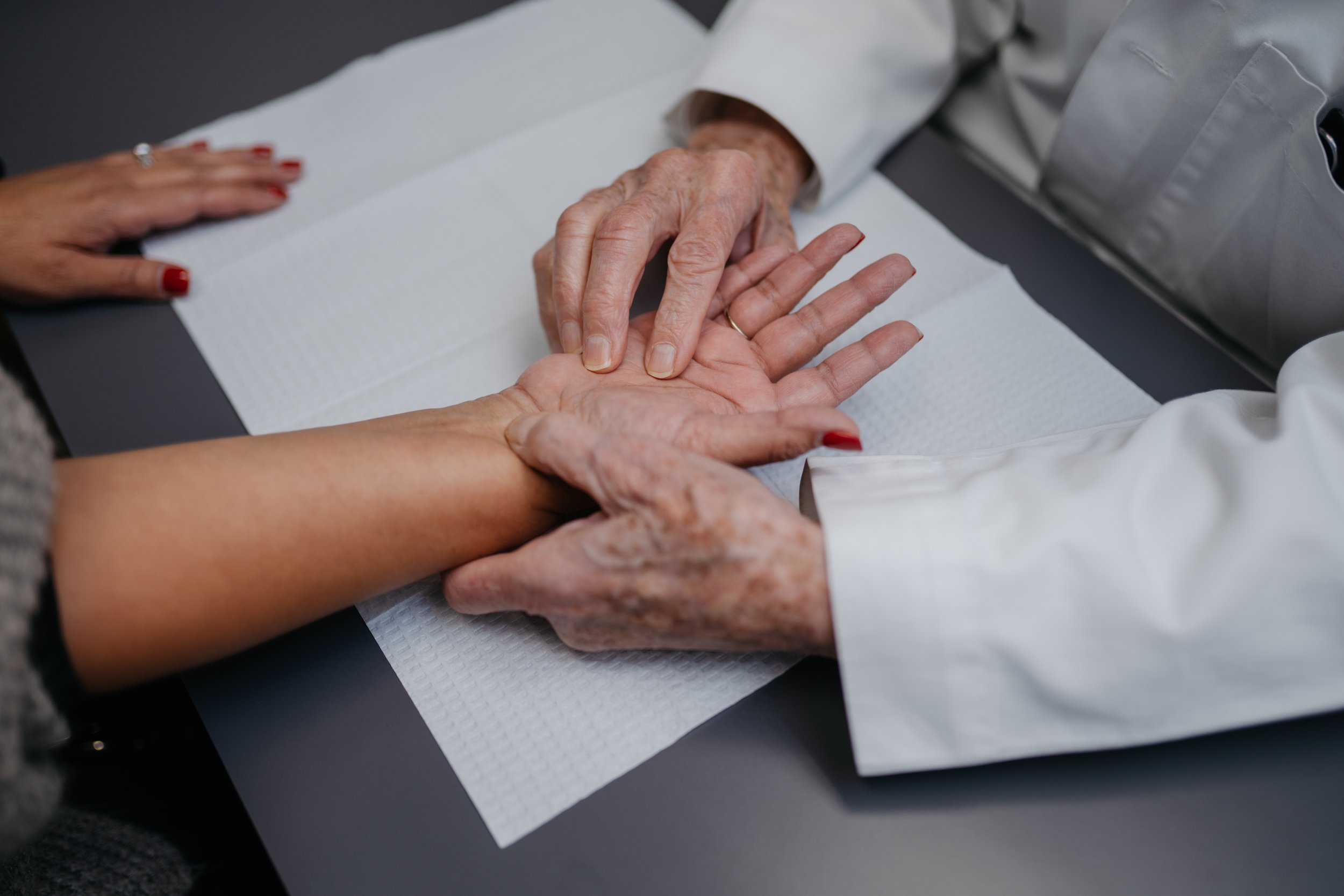
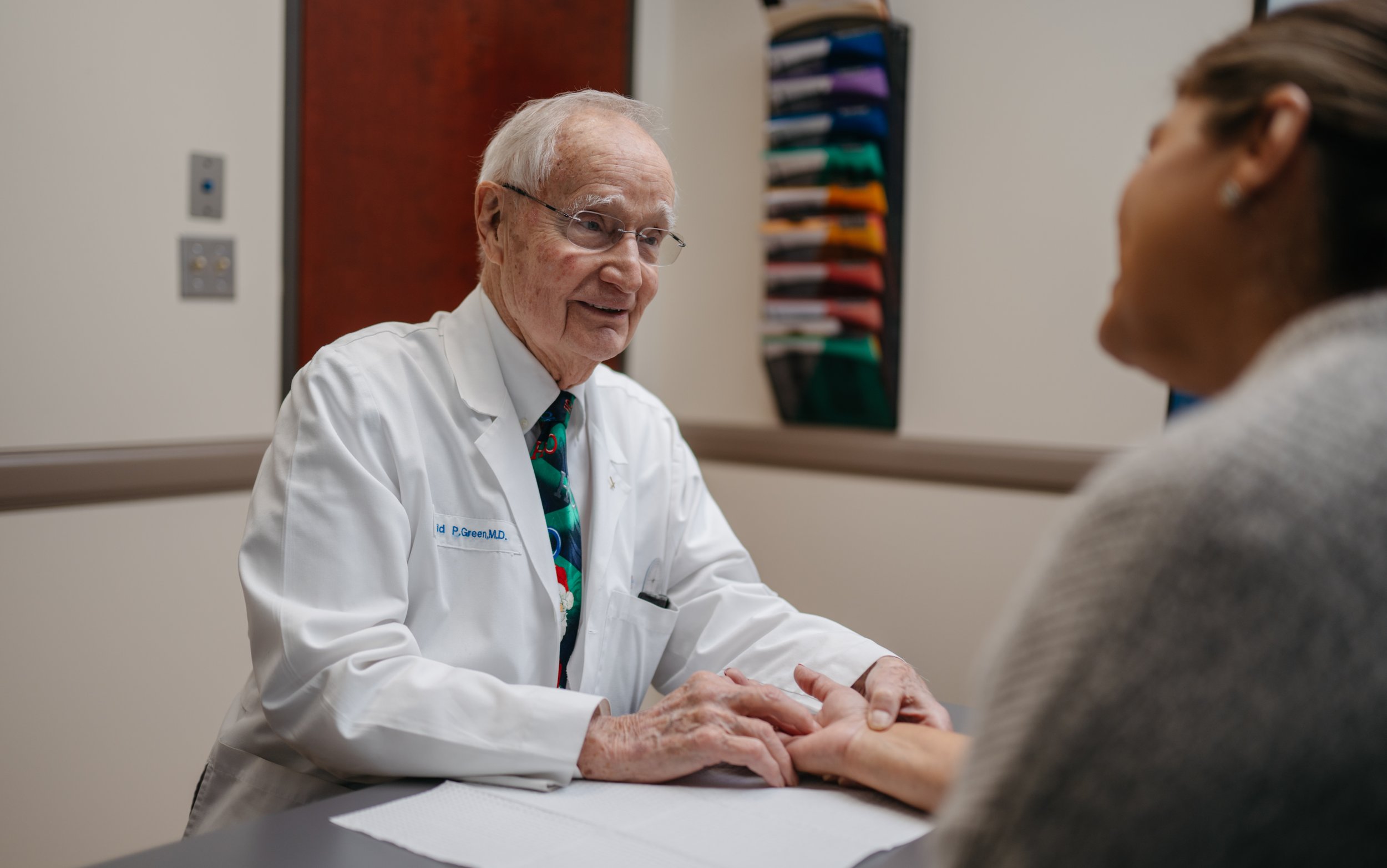
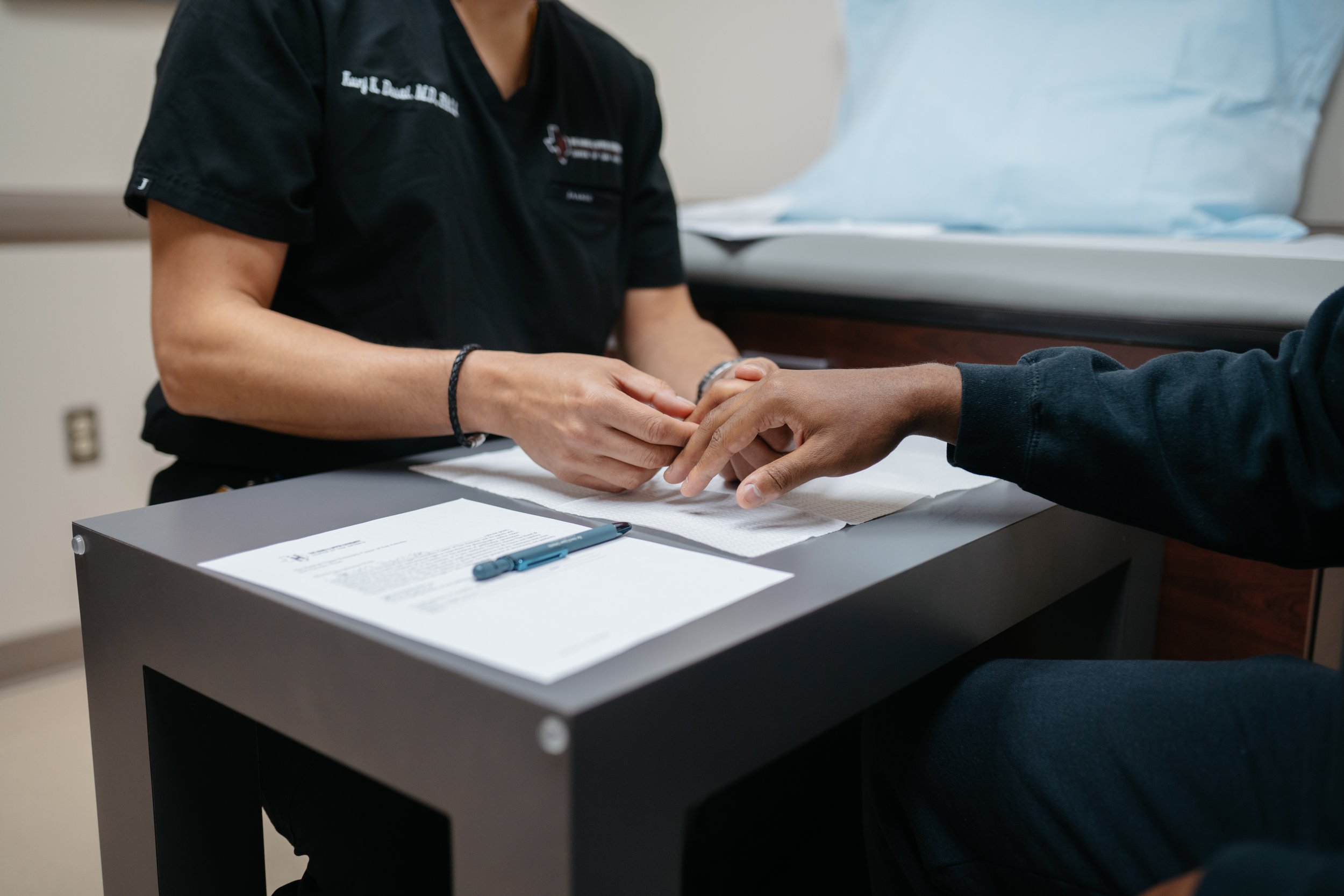
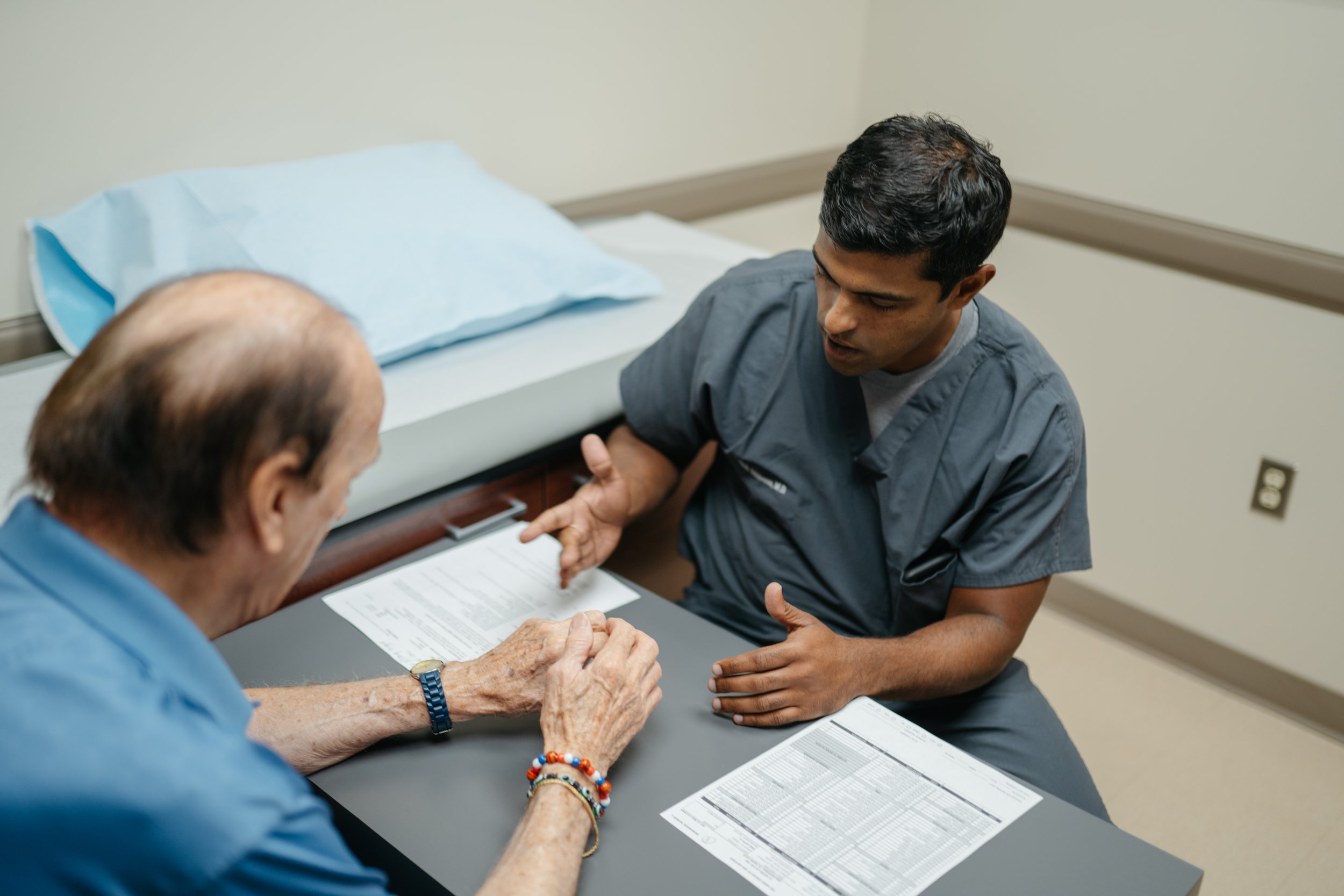
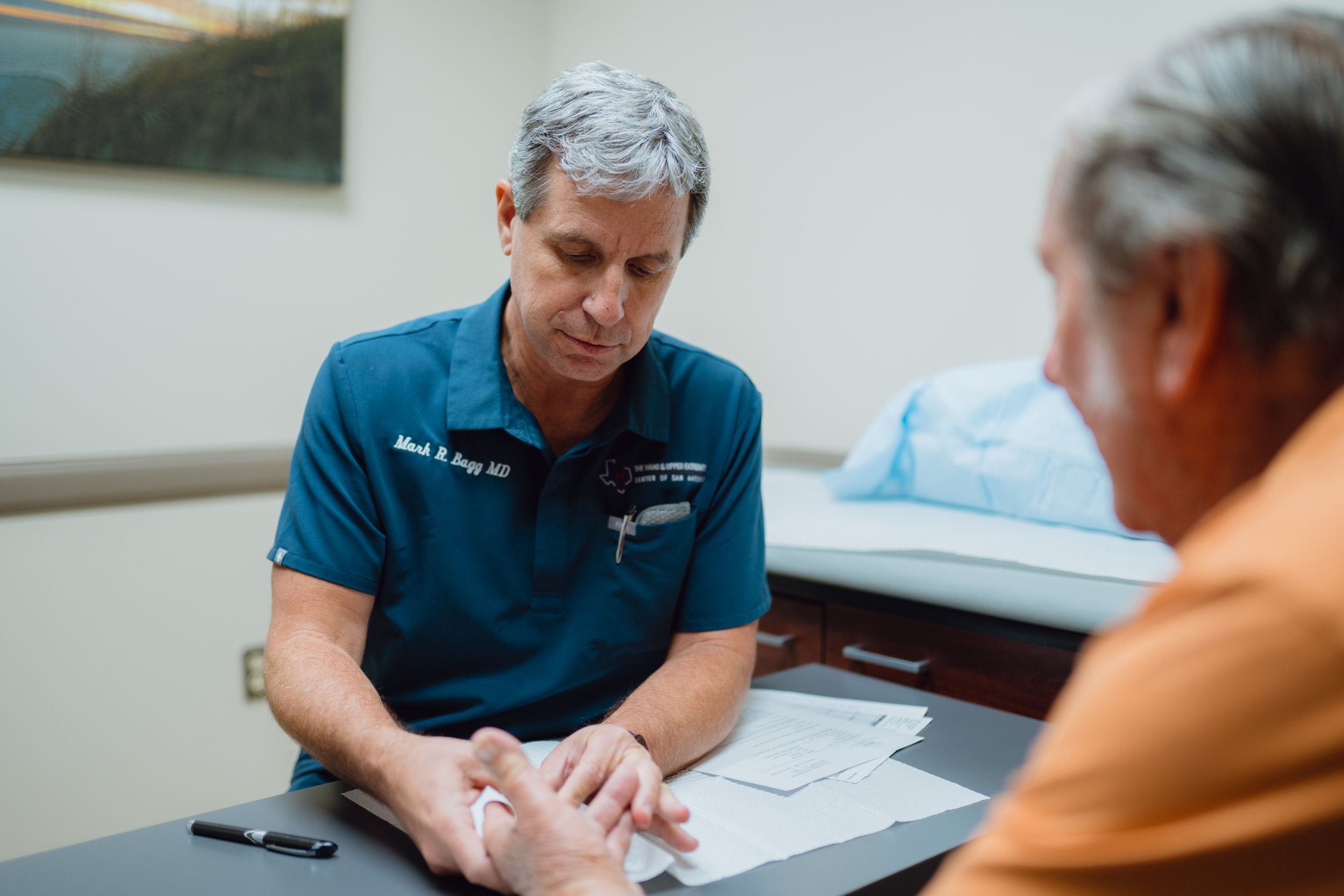
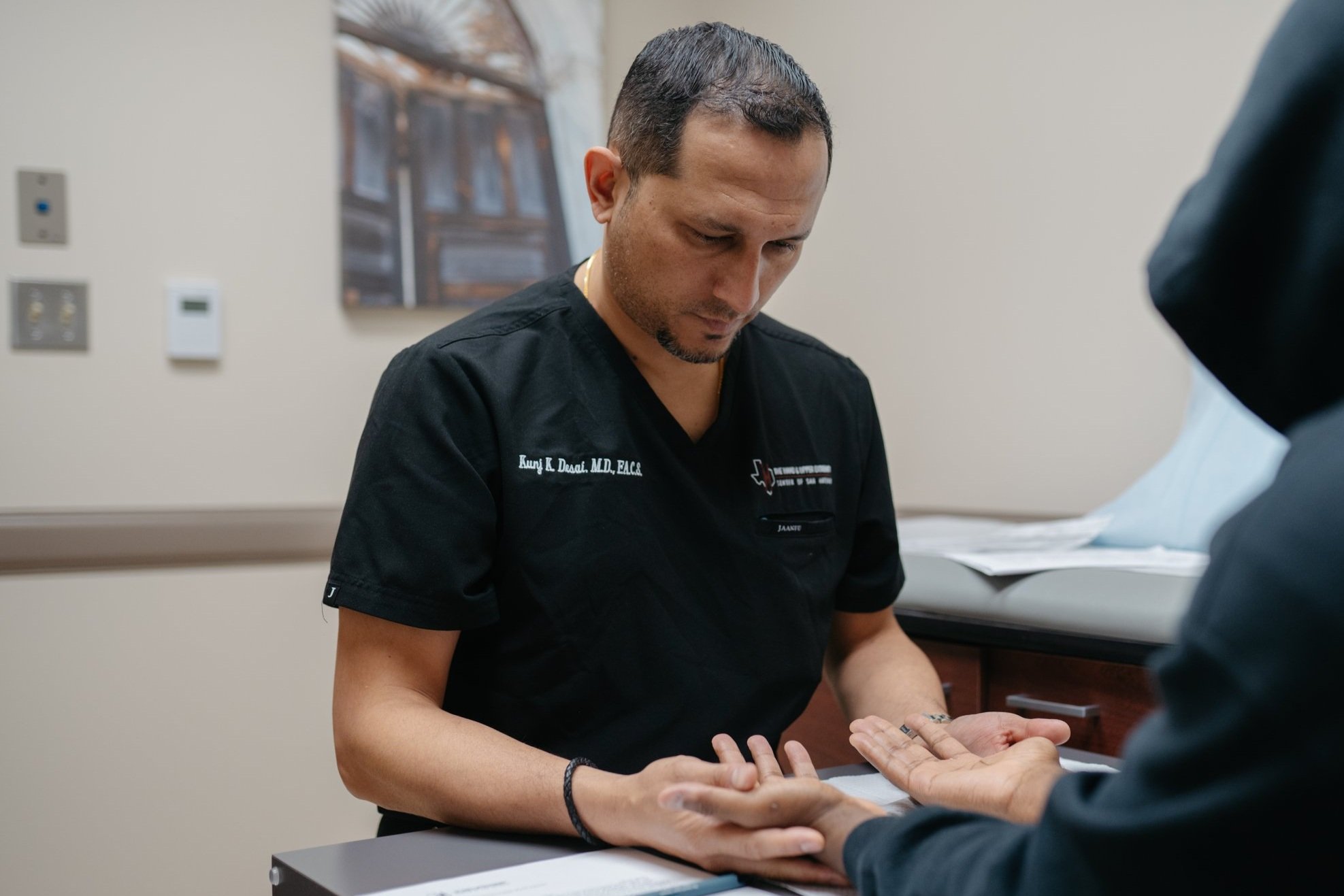
why come to The Hand and Upper Extremity Center of San Antonio for your Wrist Ganglion Cyst?
When you visit us at The Hand and Upper Extremity Center of San Antonio, you will find a fine-tuned team ready to take care of you. Your physicians have over 100 years of collective experience and represent multiple generations and training backgrounds. In addition to your surgeons, you may meet one of our hand surgery fellows. Each fellow is a fully trained orthopaedic or plastic surgeon who has completed 5 to 7 years of surgical training after graduation from medical school and has chosen to spend an additional year in training to study hand surgery. In addition to the physicians, you will meet various staff members. From the front desk staff and Medical Assistants (MA’s) to the x-ray and cast technicians, each is committed to taking care of you.
Meet Our Physicians
-

David P. Green, M.D.
-

Mark Bagg, M.D.
-

David W. Person, M.D., F.A.C.S.
-

Ramesh C. Srinivasan, M.D.
-

Kunj Desai, M.D., F.A.C.S.
Other hand & wrist Related Issues we can help with
Dupuytren’s Disease
Flexor Tendon Laceration
Did you know we offer in-house therapy?
Hand therapy is a merging of occupational and physical therapy theory and practice that combines comprehensive knowledge of the structure of the upper limb with function and activity. Using specialized skills in assessment, planning and treatment, hand therapists provide therapeutic interventions to prevent dysfunction, restore function and/or reverse the progression of pathology of the upper limb in order to enhance an individual’s ability to execute tasks and to participate fully in life situations.
check out our latest blog posts regarding Hand & Wrist injuries
